Influence of Internal Pressure and Axial Compressive Displacement on the Formability of Small-Diameter ZM21 Magnesium Alloy Tubes in Warm Tube Hydroforming
Abstract
1. Introduction
2. Materials and Methods
2.1. Overview of the THF System
2.2. Material Characteristic and Results of the Tensile Test and Bursting Test
2.3. Experimental Methods
2.4. FEM Model and FE Analysis Conditions
3. Results and Discussion
3.1. Fracture and Buckling Limits of the Tube in Relation to the Loaded Internal Pressure
3.2. Influence of the Axial Feeding Direction on the Deformation Characteristic in Warm Tube Hydroforming
3.3. Forming Defects
3.4. Influence of Deference in the Loading Path on the Deformation Characteristics in Warm Tube Hydrofoming
3.5. Forming Limit
4. Conclusions
- The fracture and buckling limit of the tube during warm THF were clarified. When the employed loading internal pressure condition α, which is a percentage of the internal pressure ph to the bursting pressure pb of the initial tube, was 90%, hydroforming of the ZM21 tube was impossible due to a fracture of the material during the axial feeding. On the other hand, warm THF, which was employed under the condition of α = 50%, caused buckling of the tube, and the tube was fractured by a severe folding deformation.
- When the loaded internal pressure condition α was 70%, the tube with wrinkles was obtained. The warm THF under the condition of α = 80% was successful, without fracture and wrinkles.
- The effect of the axial feeding direction on the deformation characteristics of the ZM21 tube was confirmed. The difference in the deformation behavior of the tube occurred around the axial feeding displacement ΔL = 1.0 mm. Additionally, the taper-shaped tube that was hydroformed successfully had grain with twin boundaries and refined grain in the bended and the expanded areas.
- The observed forming defects of the ZM21 tube were fracturing of the tube during the axial feeding in warm THF using the cylinder-cavity die and pinching of the material in the section between the left and right die caused by die closing and an excessive expansion of the tube. The fracture of the tube could be caused by the severe thinning deformation of the wall with a maximum thickness strain of −31.5%. It is confirmed that a lower loaded internal pressure during the axial feeding stage is required to avoid the occurrence of these defects.
- Warm THF for the tube using the cylinder-cavity die was successful, with the modification of the loading path. The thinning that appears during the axial feeding was suppressed by the loaded lower internal pressure. The hydroformed tube obtained by warm THF using the modified loading path had a maximum thickness strain of −2.5% after the axial feeding stage. The tube with the wrinkles could be expanded successfully into the taper and the cylinder shapes by increasing the pressure in the straightening stage.
- The fracture limit of the tube during warm THF in Stage (3) was α = 200%. In addition, when the loaded pressure α was 200% or more, the tubes tended to fracture at the corner in the die cavity. The improvement of the fracture limit of the tube in Stage (3), compared with that of the initial tube, is caused by the thickening of the wall, which occurs in Stage (2), and the high strength due to the finer grain.
- The radius of the bended area in the taper- and cylinder-shaped tube were measured. It is considered that the forming limit of the tube with the die-corner shape was around R = 0.3 to 4.0 mm.
Author Contributions
Funding
Conflicts of Interest
References
- Yamamoto, R. Biomedical application of magnesium alloys. J. Jpn. Inst. Light Metals 2008, 58, 570–576. [Google Scholar] [CrossRef]
- Bommala, V.K.; Krishana, M.G.; Rao, C.T. Magnesium matrix composites for biomedical applications: A review. J. Magnes. Alloy. 2019, 7, 72–79. [Google Scholar] [CrossRef]
- Yoshihara, S.; Furushima, T. Development and applications of magnesium alloy micro tubes: Efforts on development bio-absorbable material. J. Jpn. Soc. Technol. Plast. 2016, 57, 1028–1033. [Google Scholar] [CrossRef]
- Choudhary, L.; Raman, R.K.S.; Hofstetter, J.; Uggowitzer, P.J. In-vitro characterization of stress corrosion cracking of aluminium-free magnesium alloys for temporary bio-implant applications. Mater. Sci. Eng. C 2014, 42, 629–636. [Google Scholar] [CrossRef] [PubMed]
- Manabe, K.; Fuchizawa, S. Tube forming technology: Toward the highest card for weight savings. J. Jpn. Soc. Technol. Plast. 2011, 52, 33–41. [Google Scholar] [CrossRef]
- MacDonald, B.J. Finite element simulation of hydroforming processes—A review and future directions. J. Jpn. Soc. Technol. Plast. 2012, 53, 176–182. [Google Scholar] [CrossRef]
- Cahn, L.C. Finite-element damage analysis for failure prediction of warm hydroforming tubular magnesium alloy sheets. J. Miner. Metals Mater. Soc. 2015, 67, 450–458. [Google Scholar]
- Manabe, K.; Fujita, K.; Tada, K. Experimental and numerical study on warm hydroforming for T-shape joint of AZ31 magnesium alloy. J. Chin. Soc. Mech. Eng. 2010, 31, 284–287. [Google Scholar]
- Manabe, K.; Morishima, T.; Ogawa, Y.; Tada, K.; Murai, T.; Nakagawa, H. Warm hydroforming process with non-uniform heating for AZ31 magnesium alloy tube. Mater. Sci. Forum 2010, 654, 739–742. [Google Scholar] [CrossRef]
- Liewald, M.; Pop, R. Magnesium tube hydroforming. Mater. Sci. Eng. Technol. 2008, 35, 343–348. [Google Scholar] [CrossRef]
- Geiger, M.; Kleiner, M.; Eckstein, R.; Tiesler, N.; Engel, U. Microforming. CIRP Ann. 2001, 50, 445–462. [Google Scholar] [CrossRef]
- Zhuang, W.; Wang, S.; Lin, J.; Hartl, C. Experimental and numerical investigation of localized thinning in hydroforming of micro-tubes. Eur. J. Mech. A Solids 2011, 31, 67–76. [Google Scholar] [CrossRef]
- Manabe, K. Micro forming processing of metal tubes. Jpn. Soc. Technol. Plast. 2019, 2, 8–13. [Google Scholar]
- Yasui, H.; Yoshihara, S.; Yamada, R.; Ito, Y. Deformation behavior on small-diameter ZM21 magnesium alloy tube in warm tube hydroforming. J. Jpn. Soc. Technol. Plast. 2019, 60, 346–351. [Google Scholar] [CrossRef]
- Yasui, H.; Yoshihara, S.; Mori, S.; Tada, K.; Manabe, K. Material deformation behavior in T-shape hydroforming of metal microtubes. Metals 2020, 10, 199. [Google Scholar] [CrossRef]
- Furushima, T.; Manabe, K. Fabrication of AZ31 magnesium alloy fine tubes by dieless drawing process. J. Jpn. Soc. Technol. Plast. 2010, 51, 990–992. [Google Scholar] [CrossRef][Green Version]
- Miyagawa, T.; Yoshihara, S.; Yamada, R.; Ito, Y. Influence of process condition on forming for taper shape using small diameter A1100 aluminum tube in warm tube hydroforming. In Proceedings of the 137th Conference of Japan Institute of Light Metals, Koganei, Japan, 1–3 November 2019; pp. 93–94. [Google Scholar]
- Somekawa, H.; Singh, A.; Schuh, A.C. Effect of twin boundaries on indentation behavior of magnesium alloys. J. Alloy. Compd. 2016, 685, 1016–1023. [Google Scholar] [CrossRef]

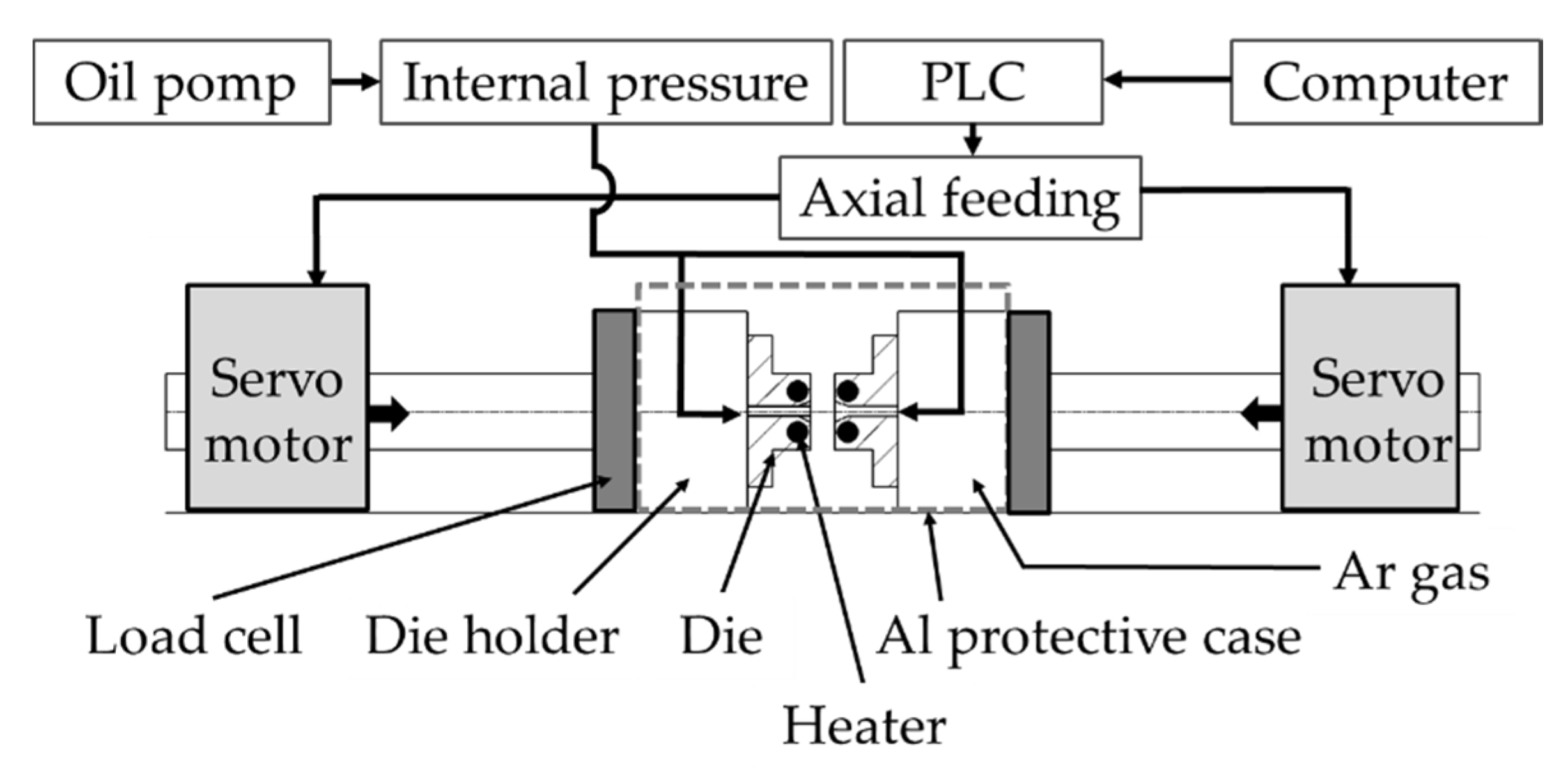

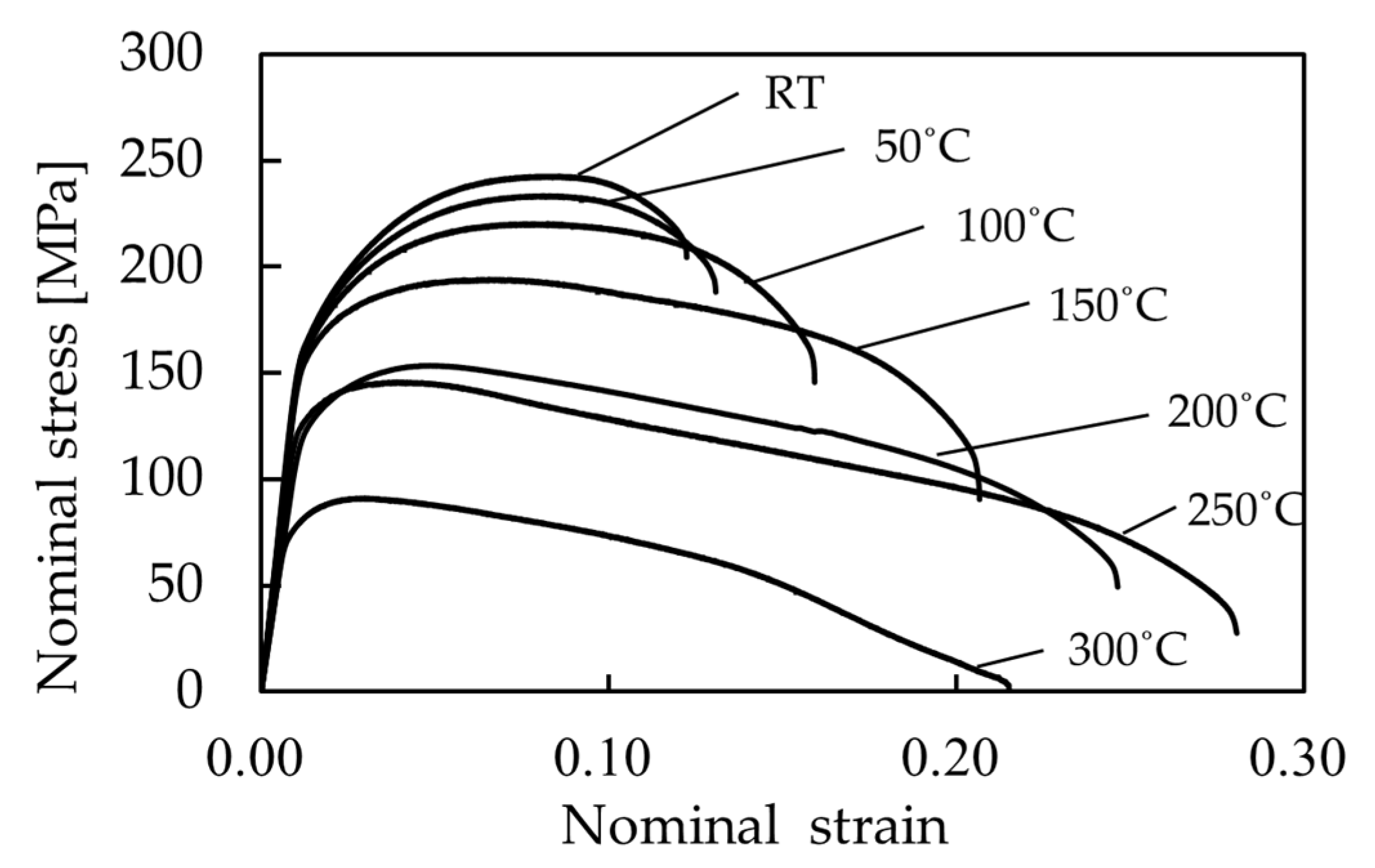
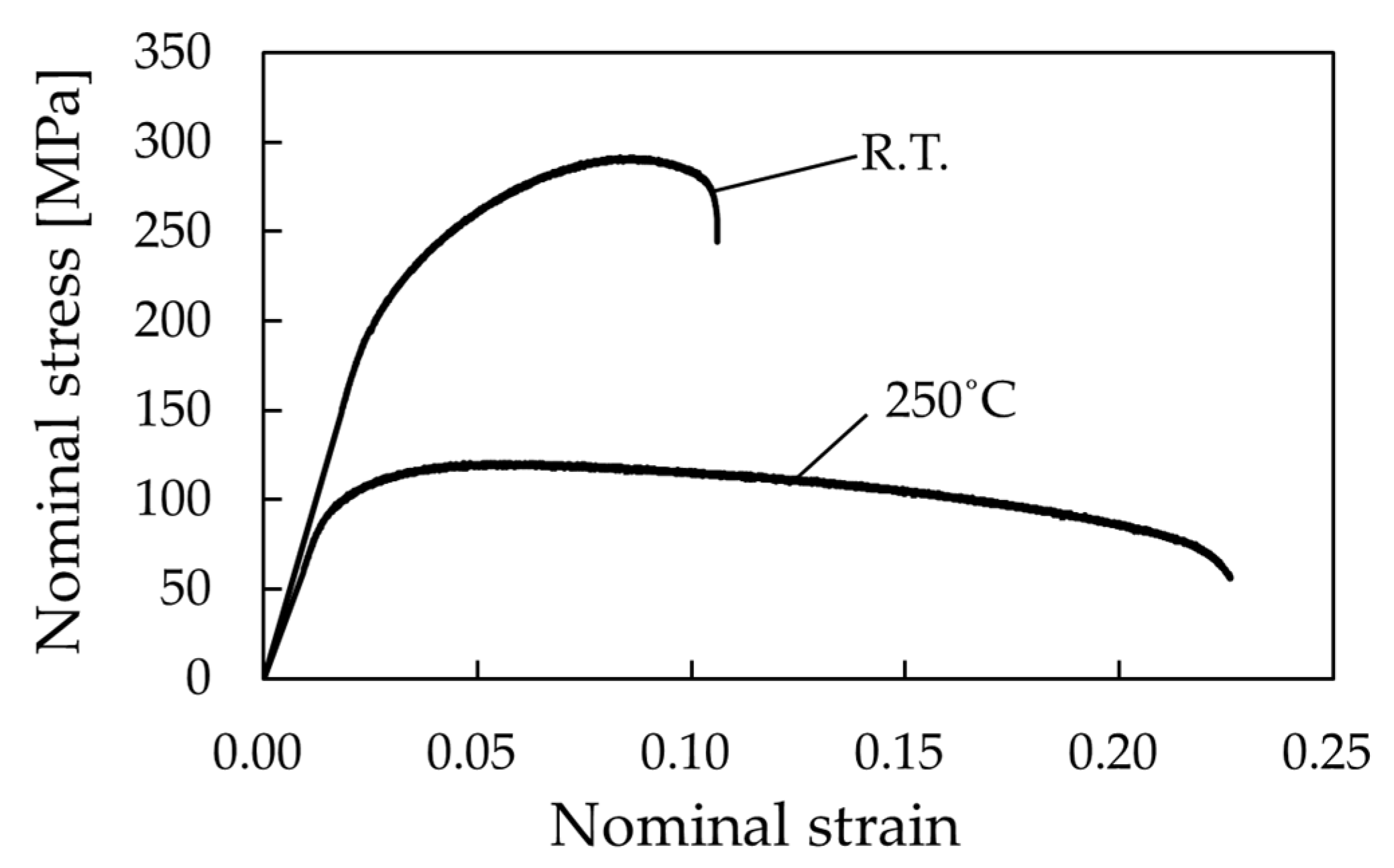
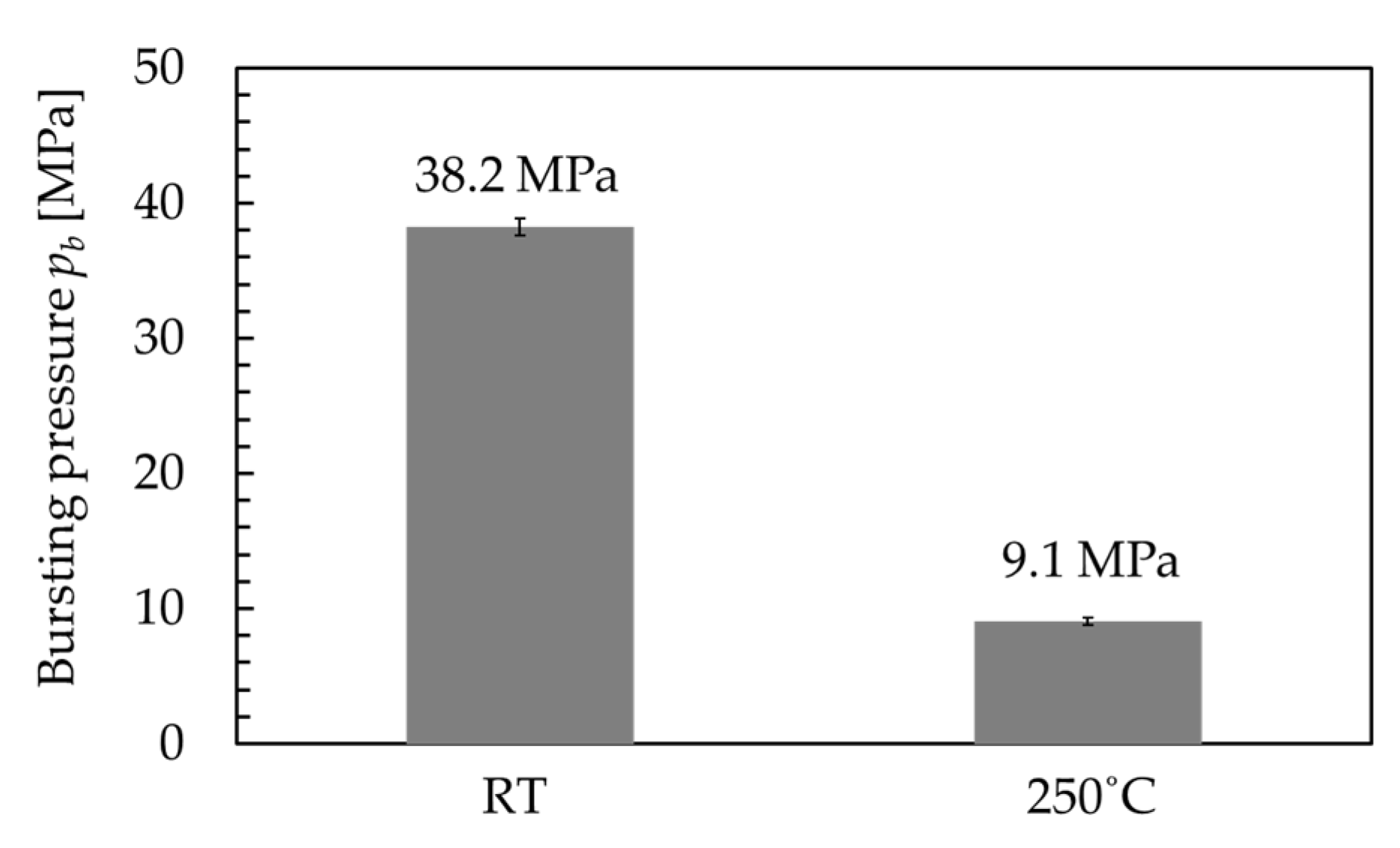

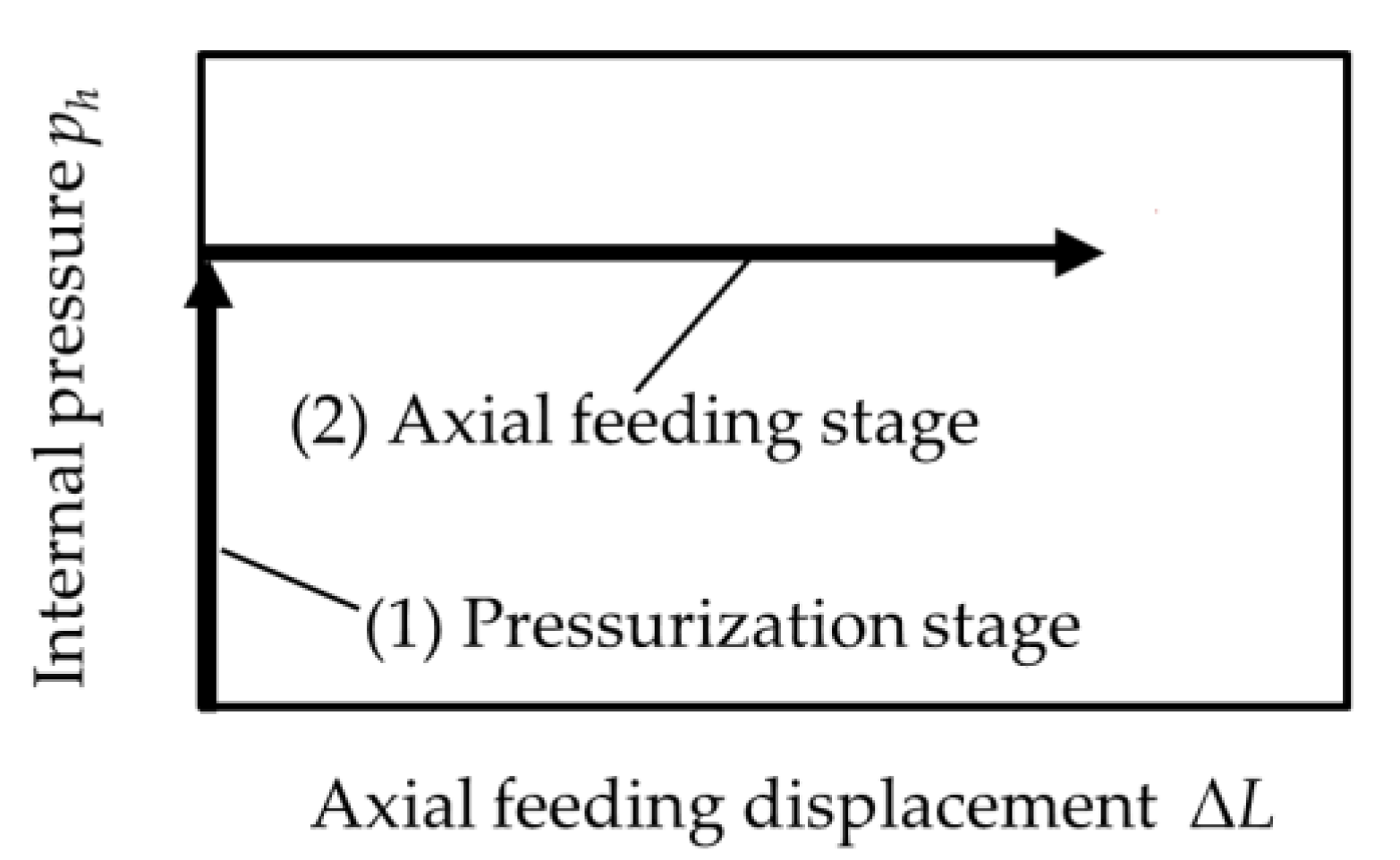


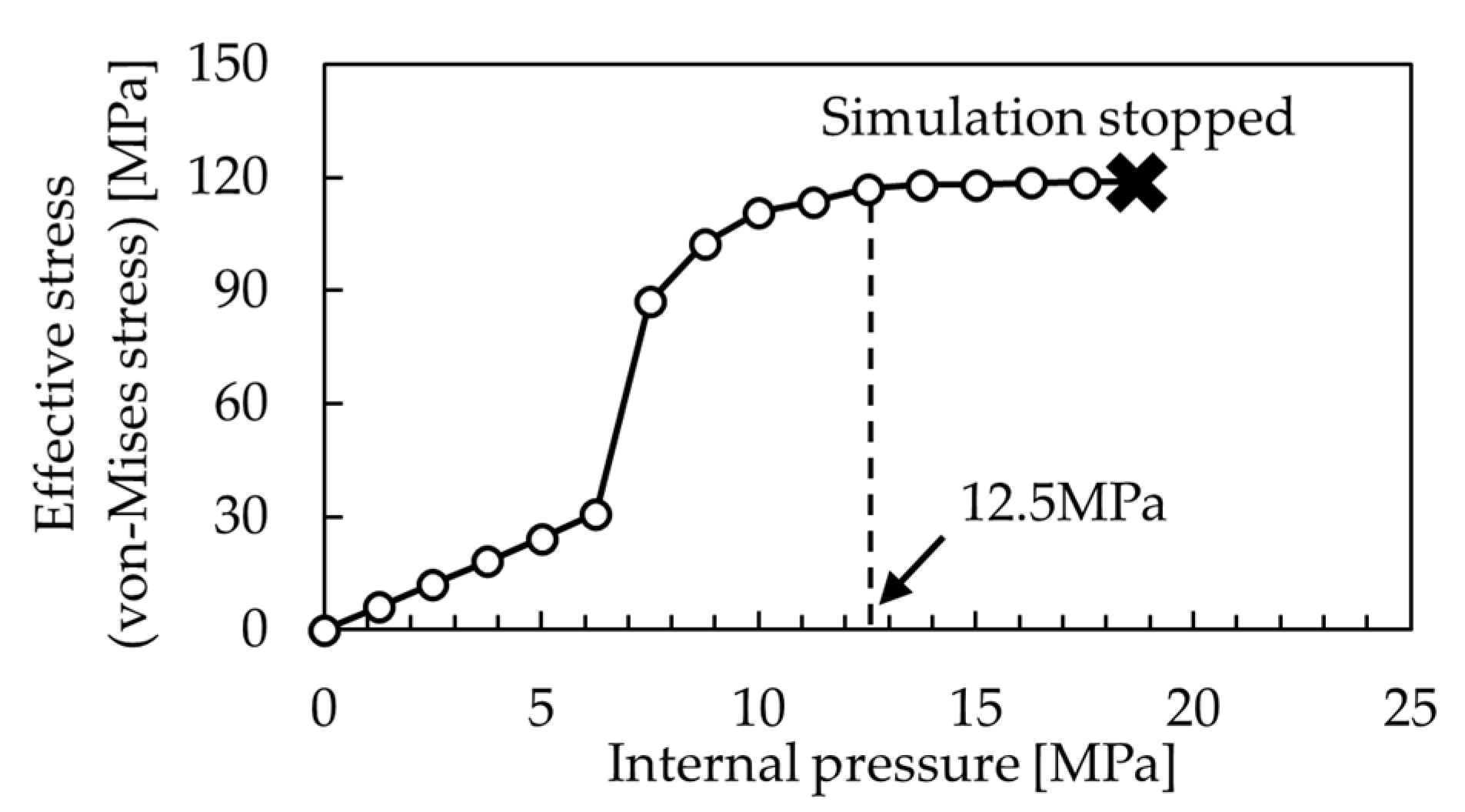
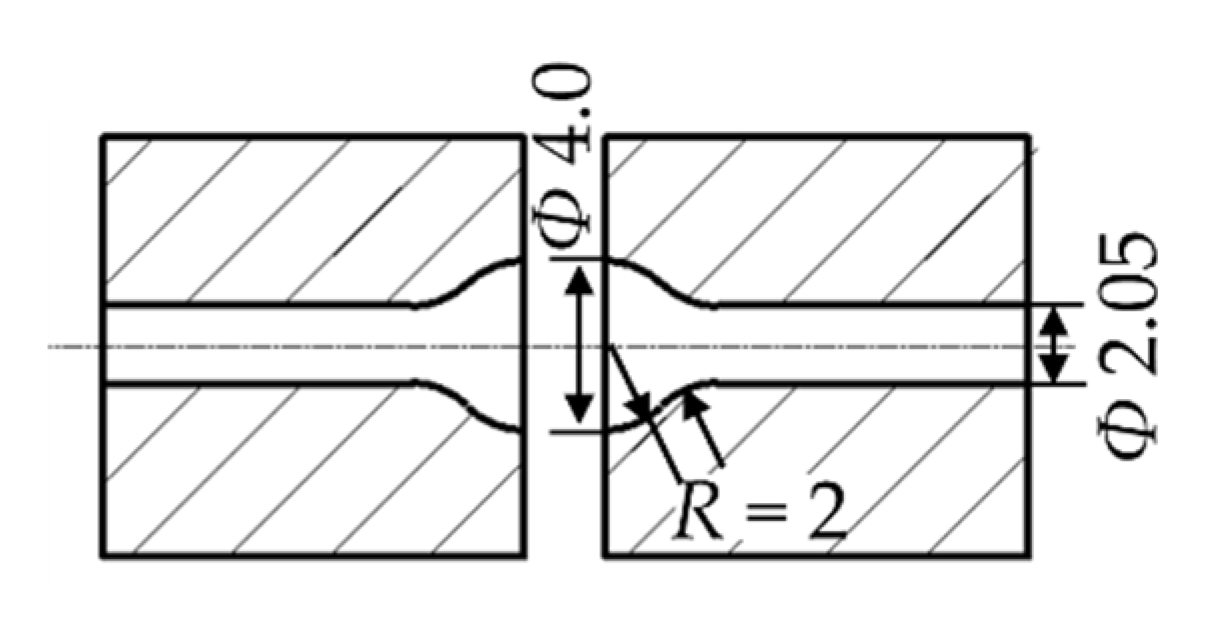
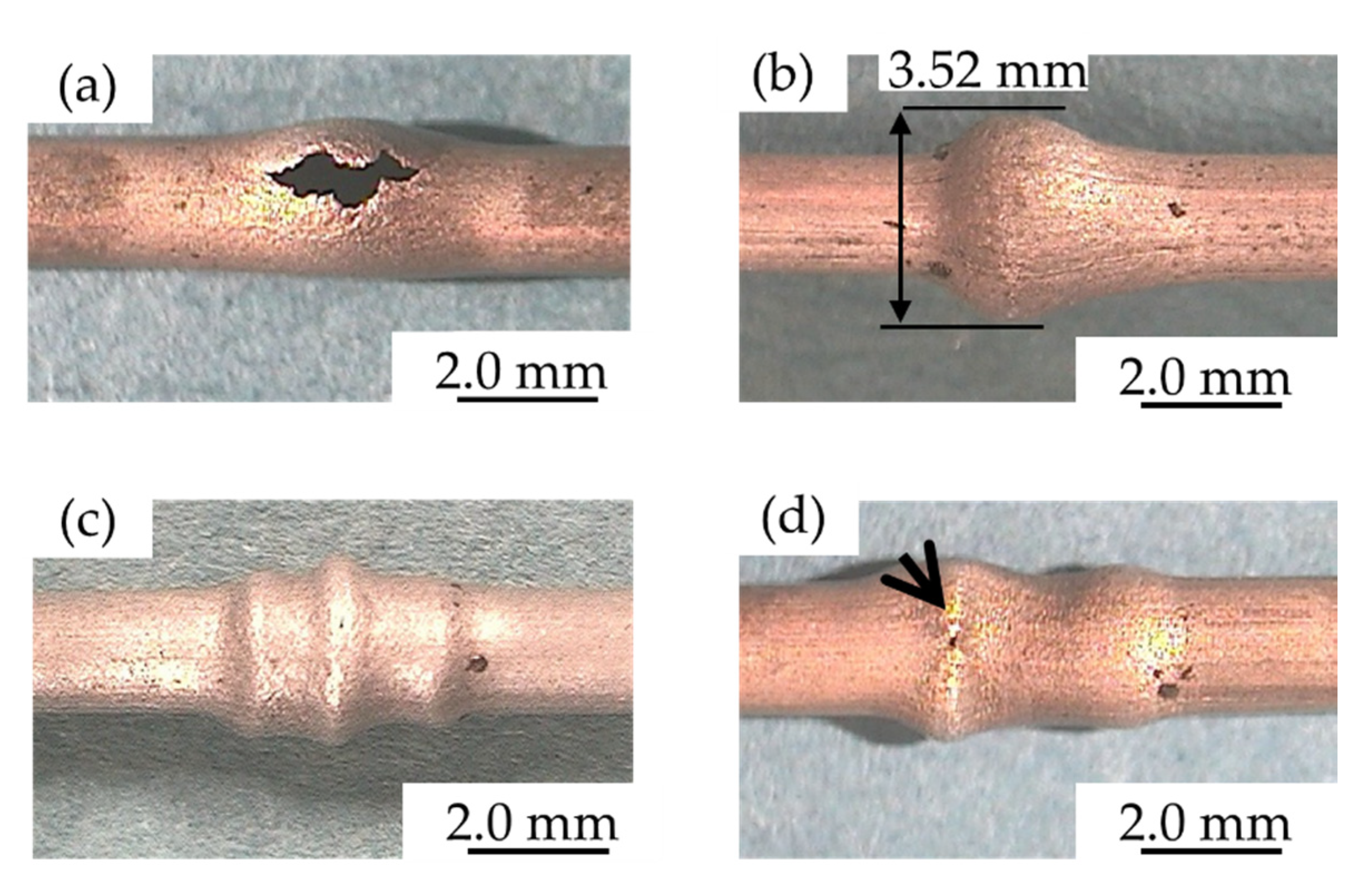
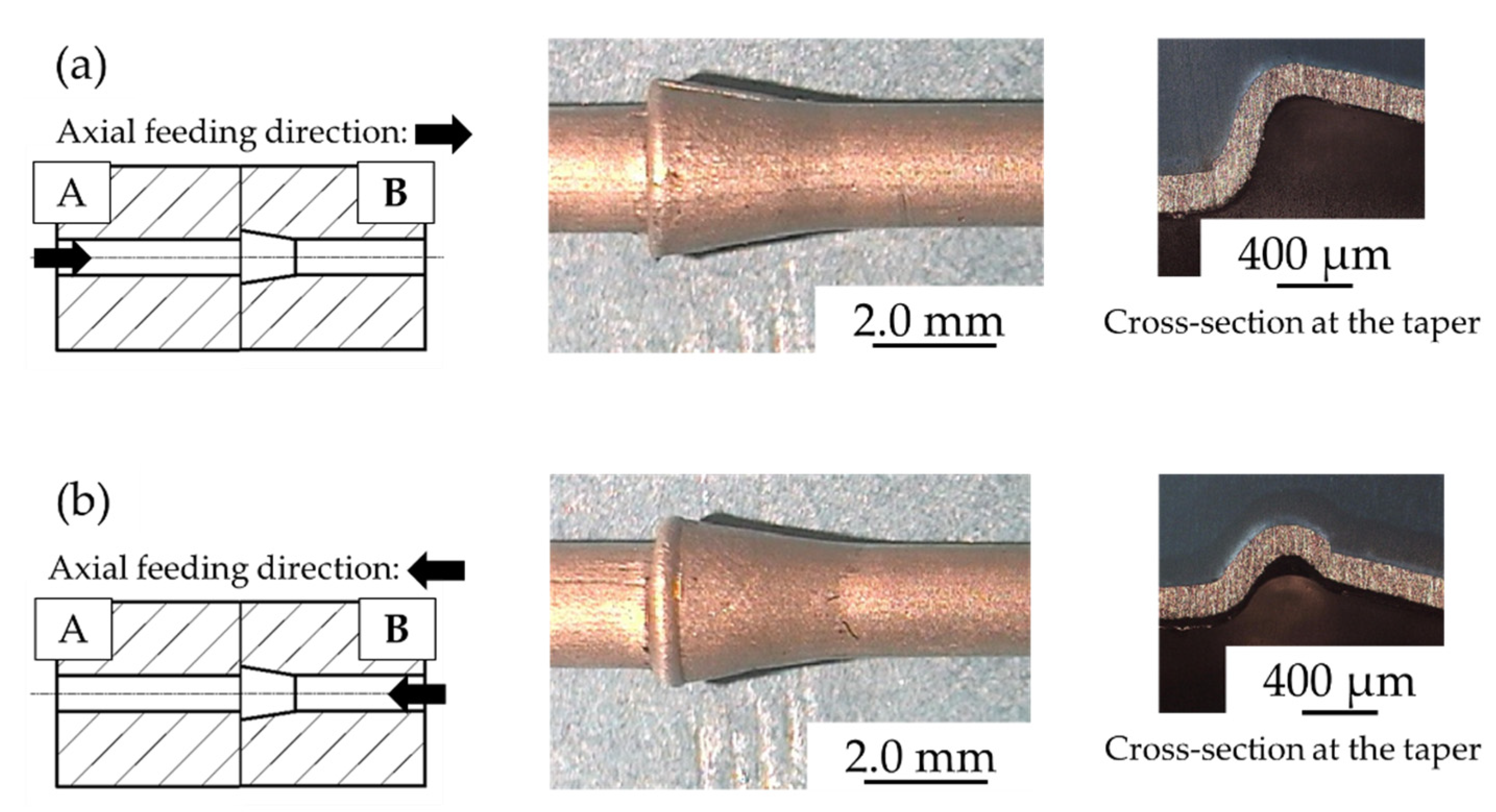

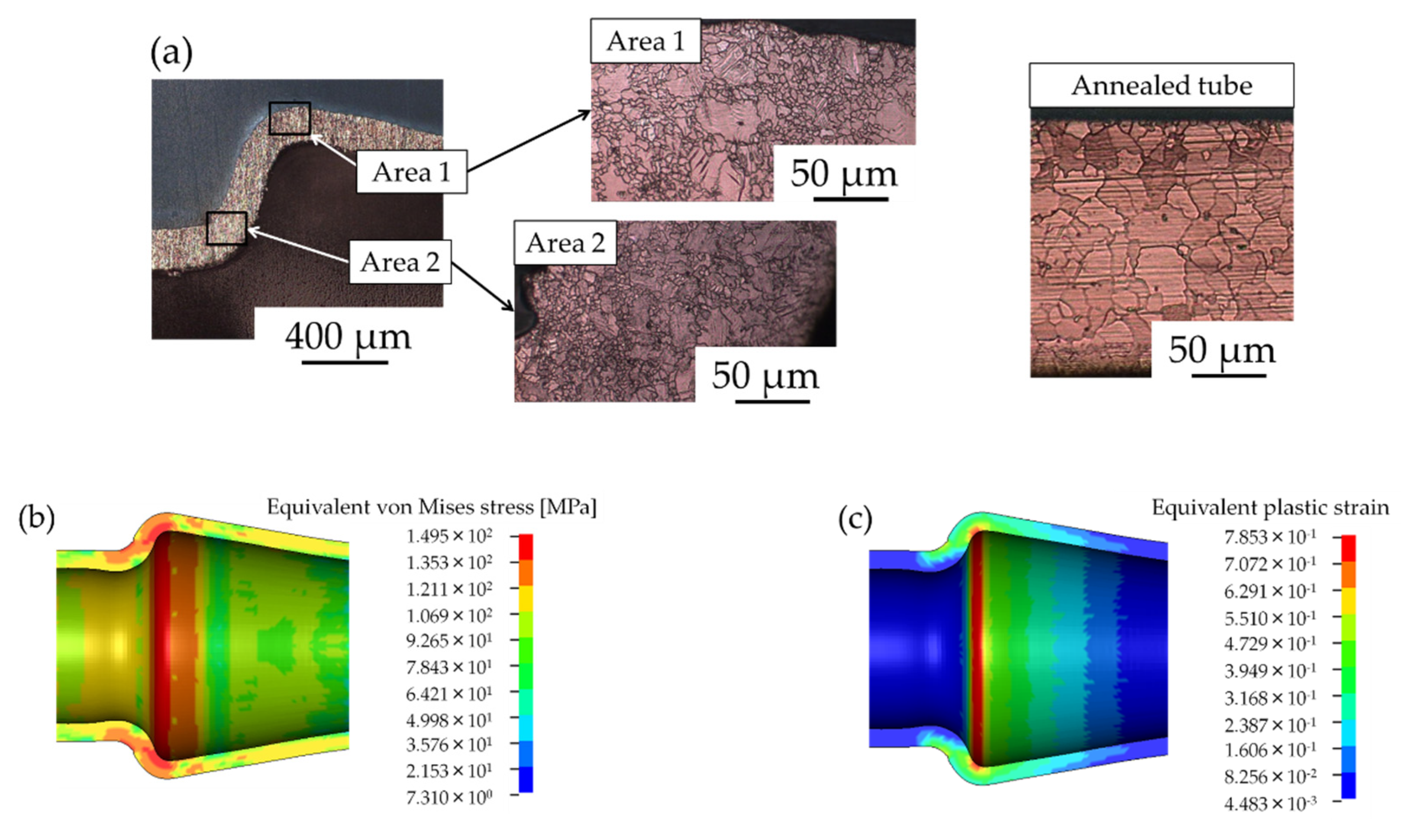

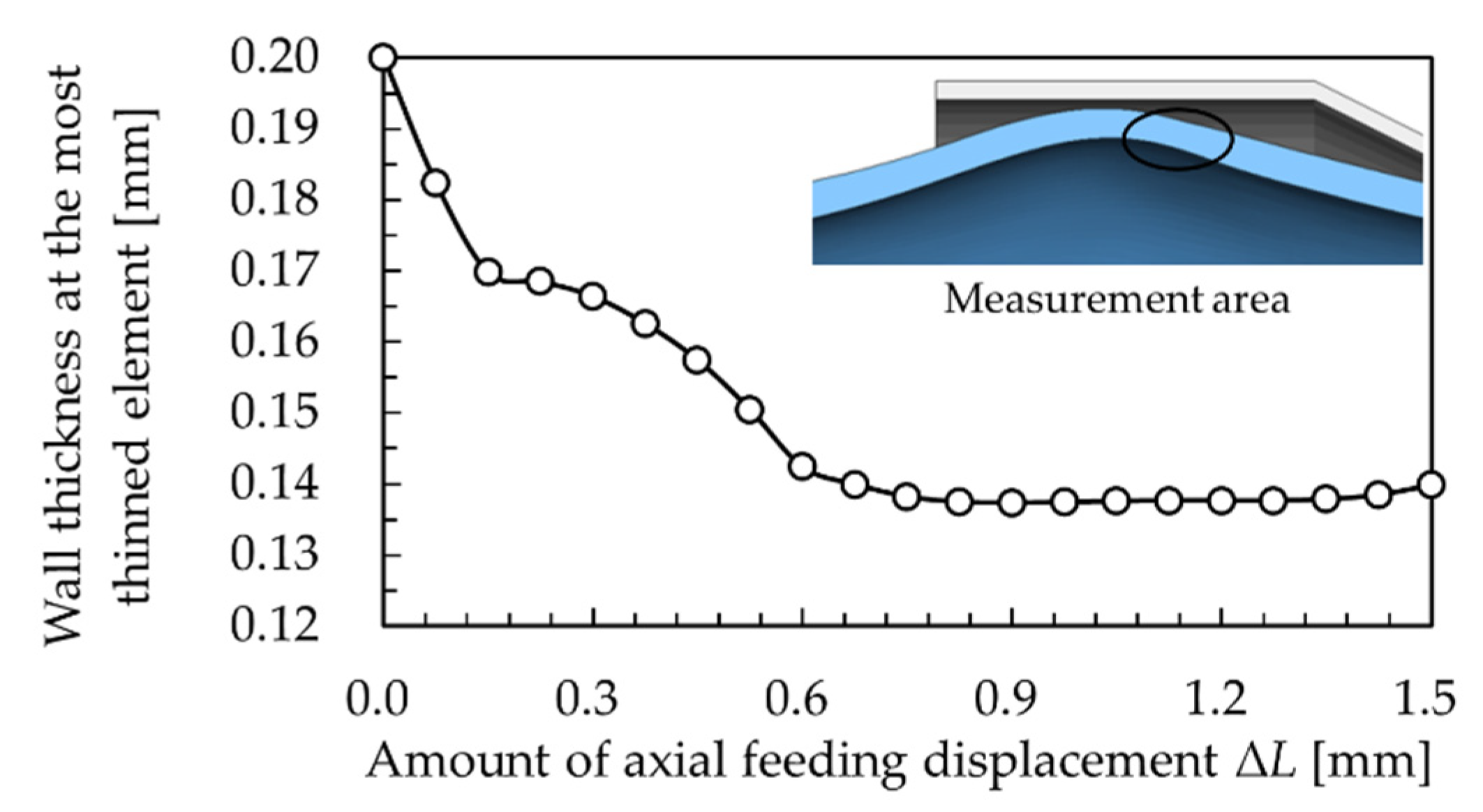
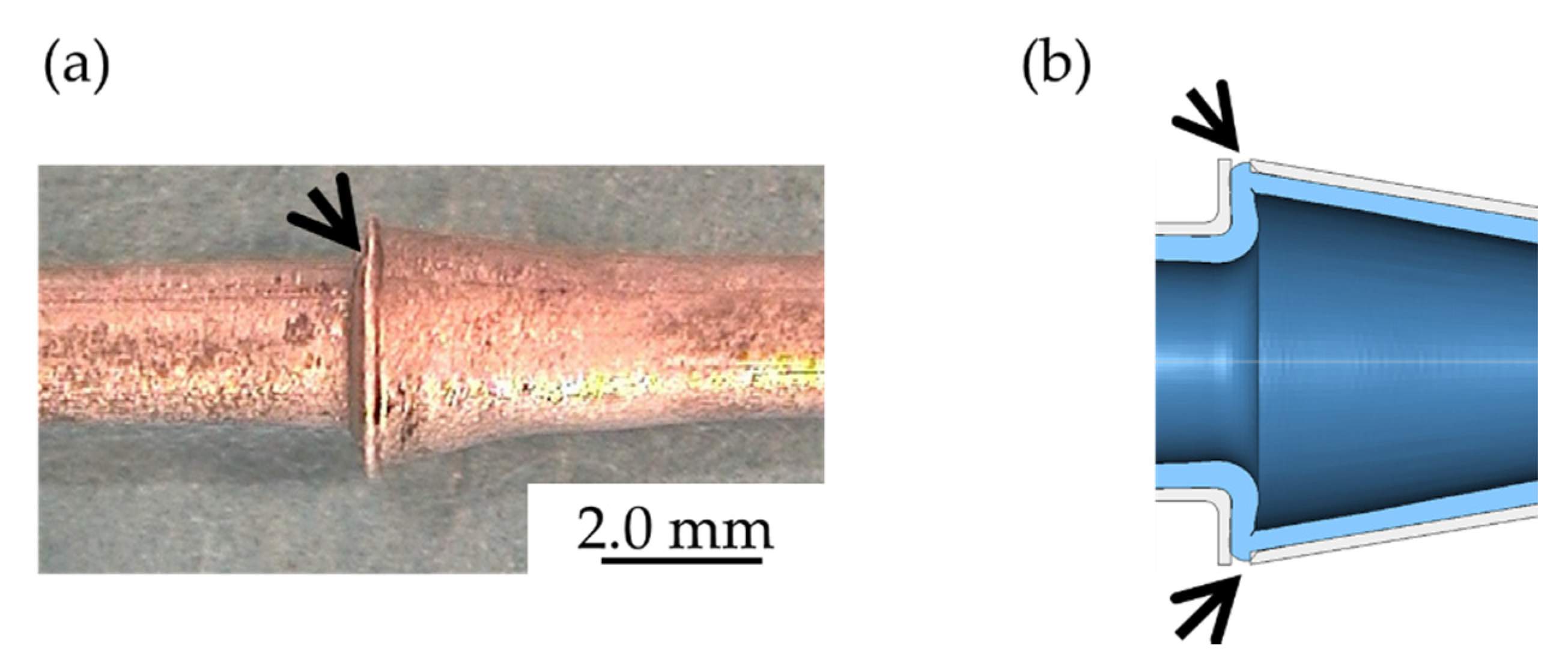
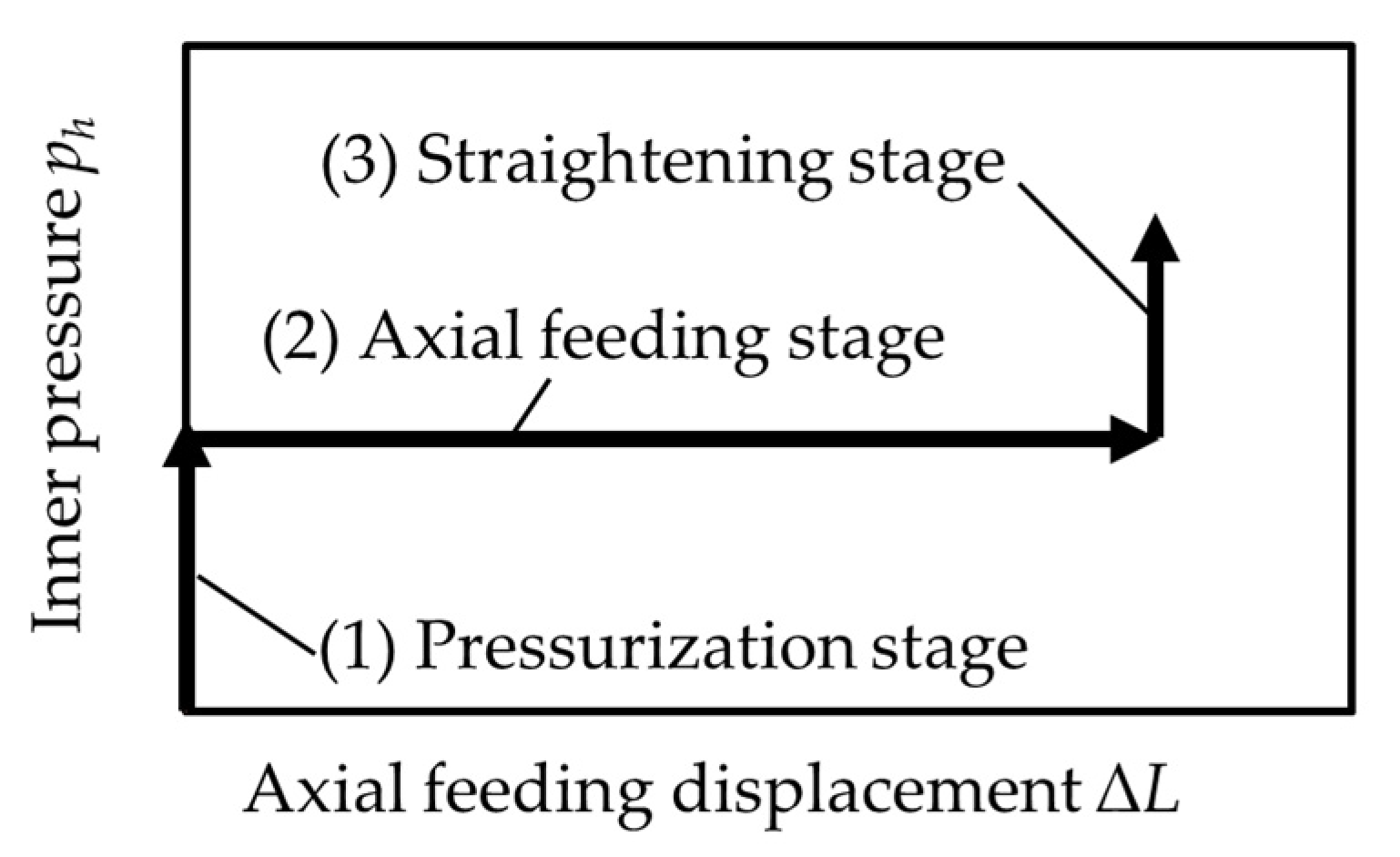
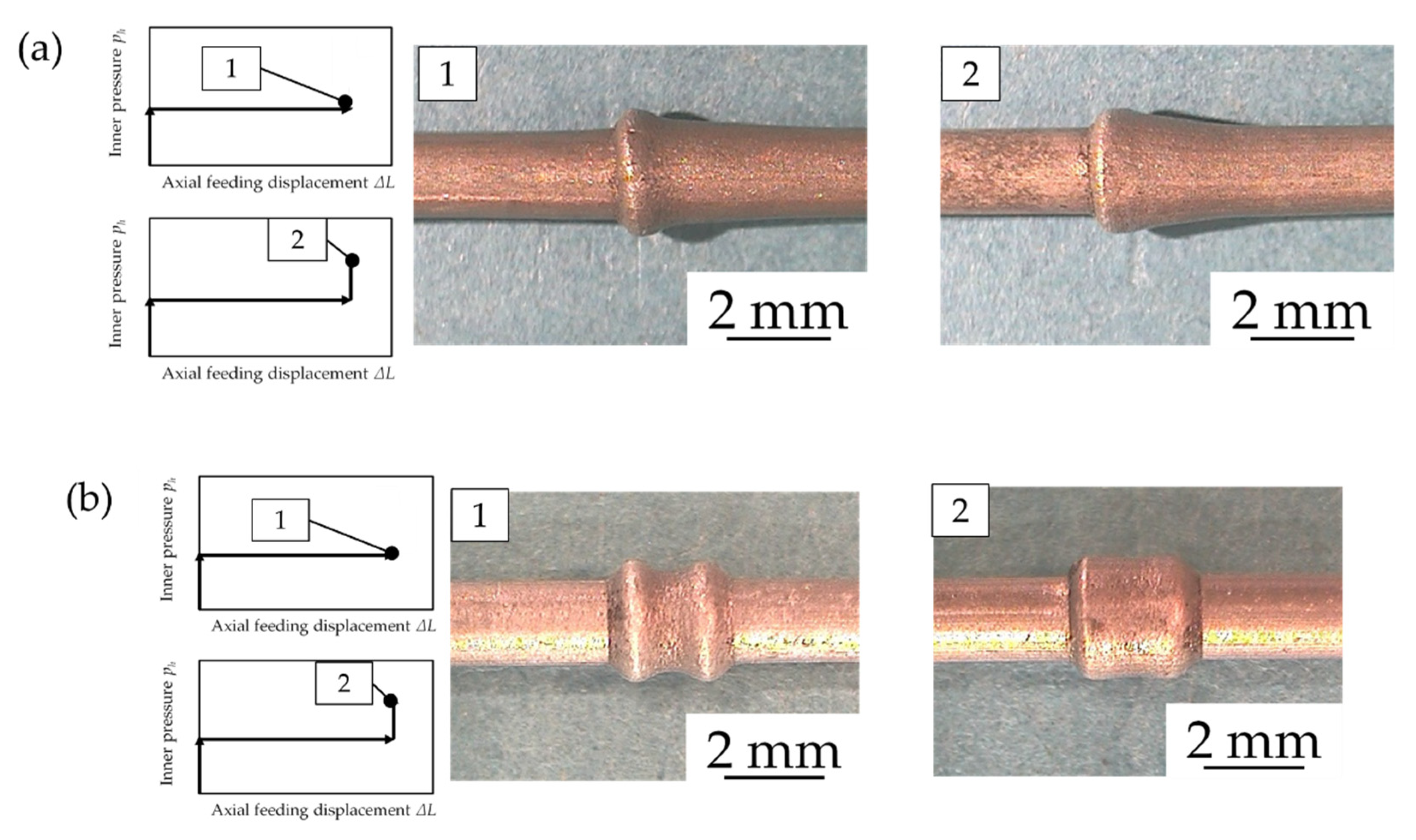

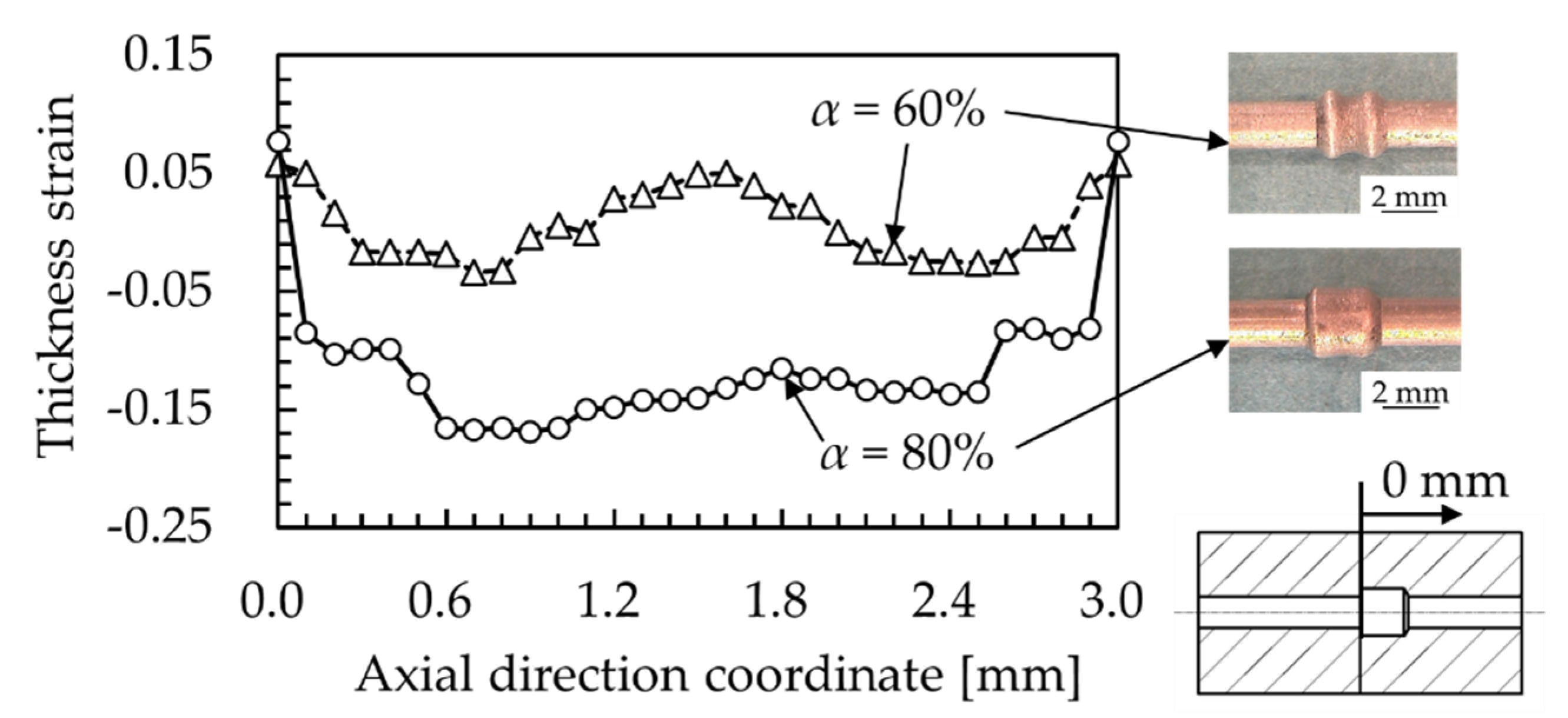
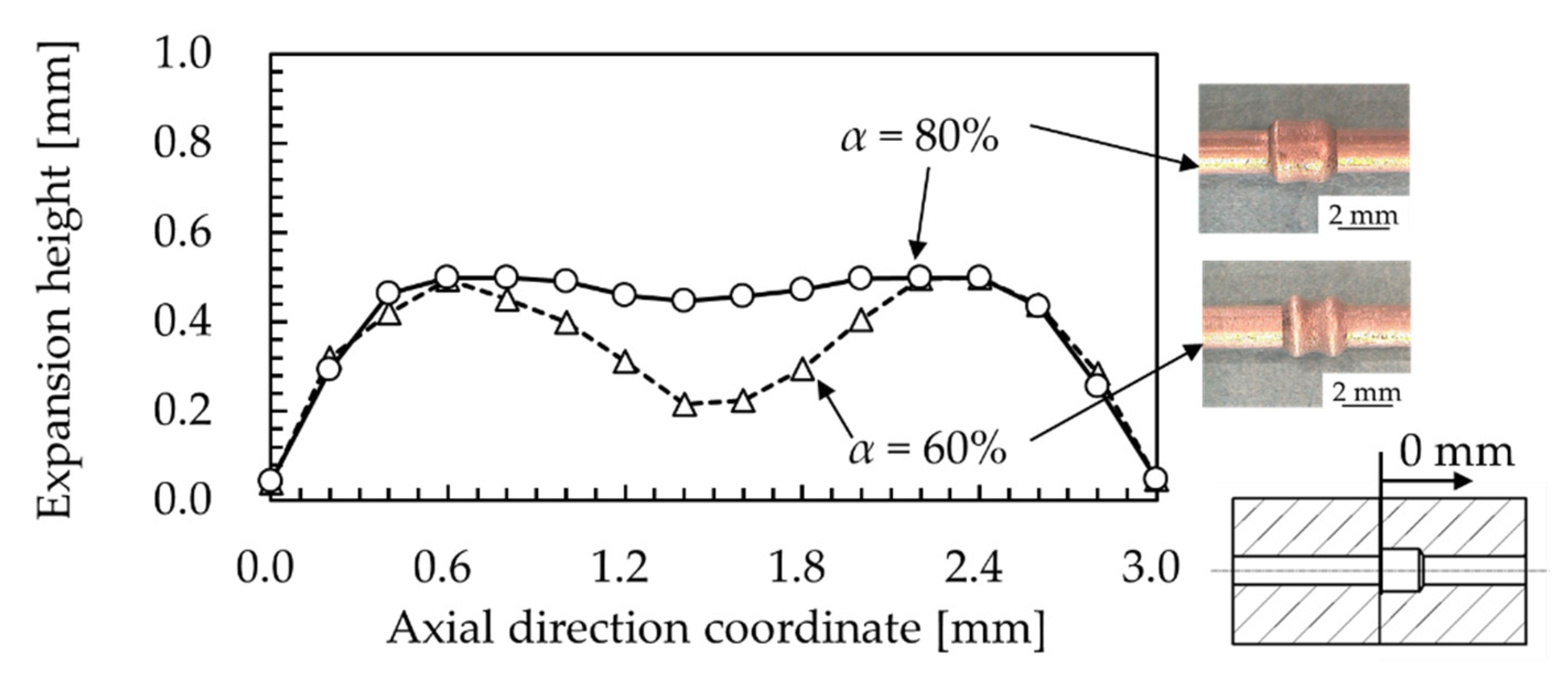

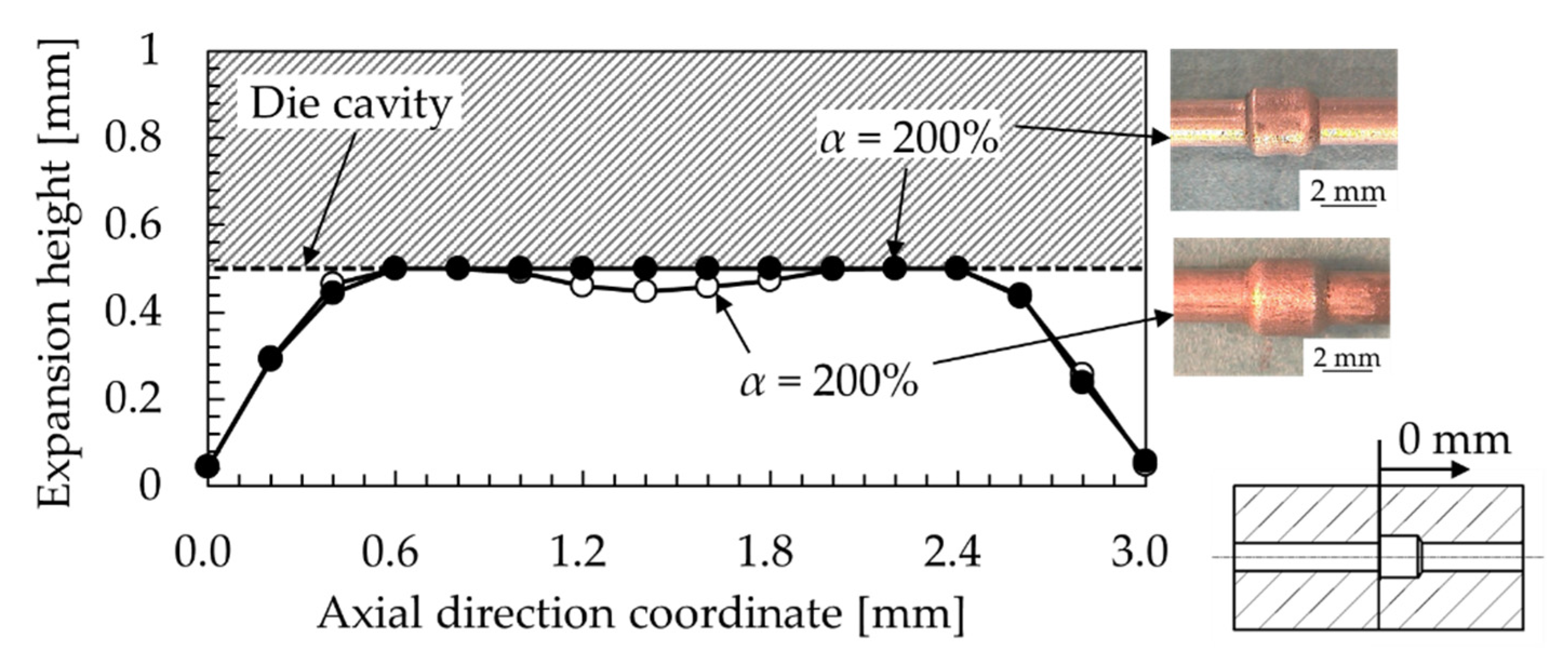


| Material | Al | Zn | Mn | Si | Fe | Cu | Ni | Mg |
|---|---|---|---|---|---|---|---|---|
| ZM21 | 0.004 | 1.81 | 0.68 | 0.01 | 0.028 | 0.001 | 0.001 | Bal. |
| Material | ZM21 (250 °C) |
|---|---|
| Material model | Elastoplastic body (Multilinear plasticity) |
| Mass density (kg/mm3) | 1800 |
| Elastic modulus (GPa) | 8.20 |
| Yield stress (MPa) | 90.76 |
| Poisson’s ratio | 0.35 |
© 2020 by the authors. Licensee MDPI, Basel, Switzerland. This article is an open access article distributed under the terms and conditions of the Creative Commons Attribution (CC BY) license (http://creativecommons.org/licenses/by/4.0/).
Share and Cite
Yasui, H.; Miyagawa, T.; Yoshihara, S.; Furushima, T.; Yamada, R.; Ito, Y. Influence of Internal Pressure and Axial Compressive Displacement on the Formability of Small-Diameter ZM21 Magnesium Alloy Tubes in Warm Tube Hydroforming. Metals 2020, 10, 674. https://doi.org/10.3390/met10050674
Yasui H, Miyagawa T, Yoshihara S, Furushima T, Yamada R, Ito Y. Influence of Internal Pressure and Axial Compressive Displacement on the Formability of Small-Diameter ZM21 Magnesium Alloy Tubes in Warm Tube Hydroforming. Metals. 2020; 10(5):674. https://doi.org/10.3390/met10050674
Chicago/Turabian StyleYasui, Hajime, Taisuke Miyagawa, Shoichiro Yoshihara, Tsuyoshi Furushima, Ryuichi Yamada, and Yasumi Ito. 2020. "Influence of Internal Pressure and Axial Compressive Displacement on the Formability of Small-Diameter ZM21 Magnesium Alloy Tubes in Warm Tube Hydroforming" Metals 10, no. 5: 674. https://doi.org/10.3390/met10050674
APA StyleYasui, H., Miyagawa, T., Yoshihara, S., Furushima, T., Yamada, R., & Ito, Y. (2020). Influence of Internal Pressure and Axial Compressive Displacement on the Formability of Small-Diameter ZM21 Magnesium Alloy Tubes in Warm Tube Hydroforming. Metals, 10(5), 674. https://doi.org/10.3390/met10050674





